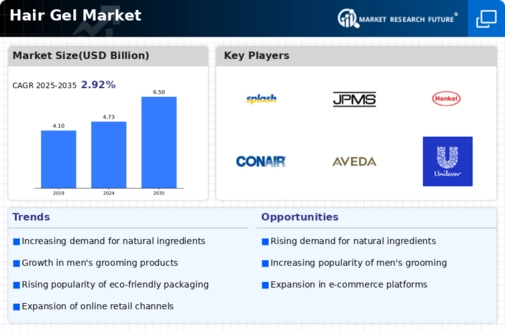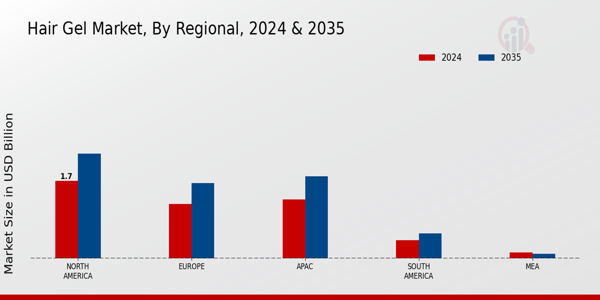Market Growth Projections
The Global Hair Gel Market Industry is projected to experience steady growth over the next decade, with estimates indicating a rise from 4.73 USD Billion in 2024 to 6.5 USD Billion by 2035. This growth trajectory suggests a compound annual growth rate (CAGR) of 2.93% from 2025 to 2035. Such projections highlight the resilience of the market amidst evolving consumer preferences and competitive dynamics. Factors contributing to this growth include the increasing popularity of hair styling products, the expansion of distribution channels, and the ongoing innovation in product formulations. These elements collectively indicate a promising outlook for the hair gel market.
Rise of E-commerce Platforms
The rise of e-commerce platforms significantly influences the Global Hair Gel Market Industry, providing consumers with convenient access to a wide range of products. Online retail channels have expanded the reach of hair gel brands, allowing them to tap into previously underserved markets. This shift towards digital shopping is particularly pronounced in regions where traditional retail infrastructure may be lacking. As a result, the market is expected to benefit from increased online sales, contributing to an anticipated growth to 6.5 USD Billion by 2035. E-commerce also enables brands to engage directly with consumers, fostering brand loyalty and enhancing customer experience.
Influence of Social Media Trends
The influence of social media trends significantly impacts the Global Hair Gel Market Industry, as platforms like Instagram and TikTok shape consumer behavior and preferences. Influencers and beauty enthusiasts often showcase various hairstyles, driving interest in hair styling products, including gels. This phenomenon encourages consumers to experiment with their looks, leading to increased sales of hair gels that promise to deliver trendy styles. As social media continues to evolve, brands are leveraging these platforms for marketing campaigns, creating a direct link between online trends and consumer purchasing decisions. This dynamic interaction is expected to sustain market growth in the coming years.
Growing Demand for Styling Products
The Global Hair Gel Market Industry experiences a growing demand for styling products, driven by changing consumer preferences towards personal grooming and aesthetics. As individuals increasingly seek to express their identity through hairstyles, hair gels have become essential tools for achieving desired looks. The market is projected to reach 4.73 USD Billion in 2024, indicating a robust consumer interest. This trend is particularly evident among younger demographics who prioritize hair styling as a form of self-expression. Consequently, manufacturers are innovating with formulations that cater to diverse hair types and styling needs, further propelling market growth.
Innovations in Product Formulations
Innovations in product formulations play a crucial role in shaping the Global Hair Gel Market Industry. Manufacturers are increasingly focusing on developing gels that not only provide hold but also nourish and protect hair. Ingredients such as natural extracts and vitamins are being incorporated to appeal to health-conscious consumers. This trend towards multifunctional products is likely to attract a broader customer base, including those who prioritize hair health alongside styling. As a result, the market is projected to grow at a CAGR of 2.93% from 2025 to 2035, reflecting the increasing consumer demand for high-quality, effective hair care solutions.
Sustainability and Eco-Friendly Products
Sustainability and eco-friendly products are becoming increasingly relevant in the Global Hair Gel Market Industry. Consumers are showing a preference for brands that prioritize environmentally friendly practices, including sustainable sourcing of ingredients and eco-conscious packaging. This shift is prompting manufacturers to reformulate their products to align with these values, thereby attracting a more environmentally aware customer base. As sustainability becomes a key purchasing criterion, brands that successfully integrate these principles into their offerings are likely to gain a competitive edge. This trend may contribute to the overall growth of the market, as consumers increasingly seek products that reflect their values.












